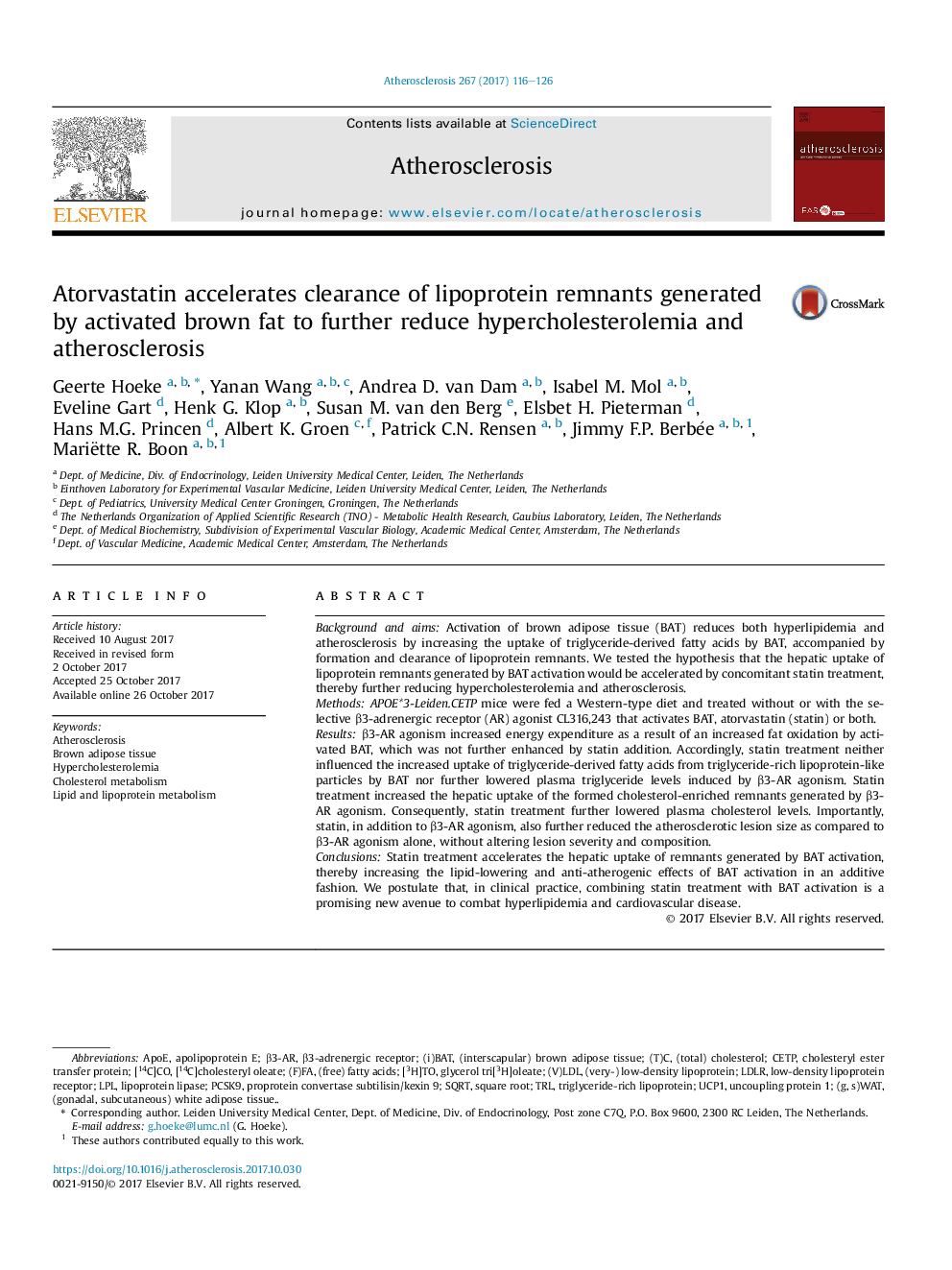| Article ID | Journal | Published Year | Pages | File Type |
|---|---|---|---|---|
| 8657077 | Atherosclerosis | 2017 | 11 Pages |
Abstract
Statin treatment accelerates the hepatic uptake of remnants generated by BAT activation, thereby increasing the lipid-lowering and anti-atherogenic effects of BAT activation in an additive fashion. We postulate that, in clinical practice, combining statin treatment with BAT activation is a promising new avenue to combat hyperlipidemia and cardiovascular disease.
Keywords
LPLLipid and lipoprotein metabolismβ3-ARPCSK9TRLLDLRCETPUcp1AtherosclerosisApoeapolipoprotein Ebrown adipose tissuesquare rootLipoprotein lipasetriglyceride-rich lipoproteinCholesterol metabolismHypercholesterolemiacholesteryl ester transfer proteinuncoupling protein 1proprotein convertase subtilisin/kexin 9β3-Adrenergic receptorLow-density lipoprotein receptor
Related Topics
Health Sciences
Medicine and Dentistry
Cardiology and Cardiovascular Medicine
Authors
Geerte Hoeke, Yanan Wang, Andrea D. van Dam, Isabel M. Mol, Eveline Gart, Henk G. Klop, Susan M. van den Berg, Elsbet H. Pieterman, Hans M.G. Princen, Albert K. Groen, Patrick C.N. Rensen, Jimmy F.P. Berbée, Mariëtte R. Boon,
